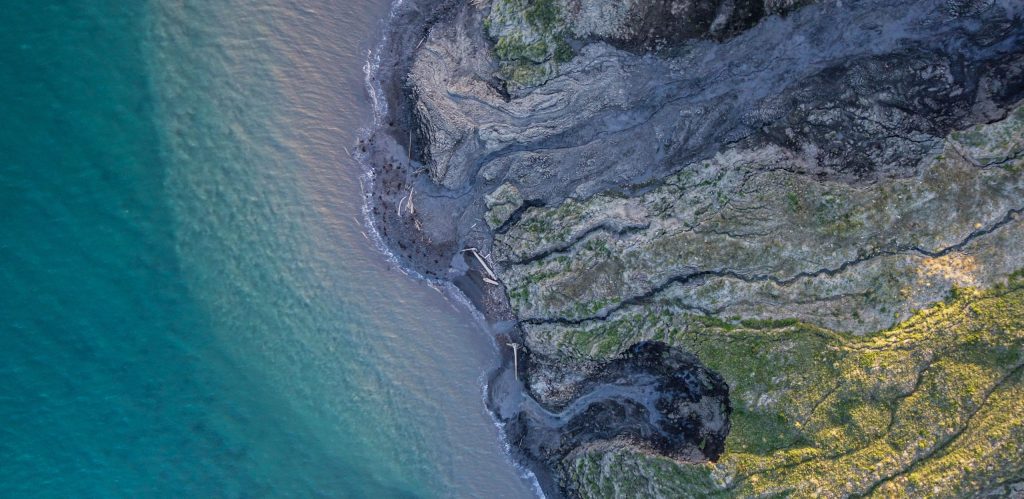Human-caused climate change fuels warmer, wetter, stormier Arctic
On December 13, the 2022 Arctic Report Card was released at a press conference hosted by the American Geophysical Union (AGU) as part of its Fall Meeting. Opening remarks were provided by NOAA Administrator Rick Spinrad. Lead editor Matthew Druckenmiller, a research scientist with the National Snow and Ice Data Center provided a summary of the report, and authors Jackie Qatalina Schaeffer, Director of Climate Initiatives for the Alaska Native Tribal Health Consortium, Karen Frey, polar scientist at Clark University and John Walsh, chief scientist at the International Arctic Research Center at the University of Alaska Fairbanks provided remarks on their research.
Compiled by 147 experts from 11 nations, the report card includes three sections: Vital Signs, Indicators and Frostbites. Vital Signs provide annual updates on key topics. This year, a chapter on precipitation has been added, reflecting an improvement in available data and showing the dramatic increase in precipitation across the Arctic in recent decades. Indicators explore topics that are periodically updated, and Frostbites report on new and emerging issues. The 15th chapter of the report card, authored by a team that includes Native Alaskan scientists, describes how warming air temperatures, shrinking sea ice, shorter periods of snow cover, increased wildfire, rising levels of precipitation and changes in animal migration patterns and their abundance profoundly affect the safety, food security, health, economic wellbeing and cultural traditions of Indigenous people.
“The Arctic remains a varied and expansive region to monitor, especially as widespread disturbances unfold and seasons shift,” said Druckenmiller. “To understand its transition, we need local to international partnerships, especially with Arctic peoples and Indigenous communities, who are vital to the use of diverse observations and knowledge, as well as to identifying solutions to long-term climate impacts and abrupt disturbances.”
Major findings in this year’s report include:
Arctic annual air temperatures from October 2021 to September 2022 were the sixth warmest dating back to 1900, continuing a decades-long trend in which Arctic air temperatures have warmed faster than the global average. The Arctic’s seven warmest years since 1900 have been the last seven years.
Arctic sea ice extent (coverage) was higher than many recent years, but much lower than the long-term average. Multiyear ice extent, sea-ice thickness and volume rebounded after a near-record low in 2021, but was below conditions in the 1980s and 1990s, with older ice extremely rare. Open water developed near the North Pole for much of the summer, allowing polar-class tourist and research vessels easy access. The Northern Sea Route and Northwest Passage were also largely open.
Satellite records from 2009 to 2018 show increasing maritime ship traffic in the Arctic as sea ice declines. The most significant increases in traffic are occurring among ships traveling from the Pacific Ocean through the Bering Strait and Beaufort Sea. This opens economic opportunities for new trade routes and also poses potential human-caused stresses on Arctic people and ecosystems.
The 2021-2022 Arctic snow season saw a combination of above-average snow accumulation but early snowmelt, consistent with long-term trends of shortening snow seasons in several areas.
Wetter-than-normal conditions predominated over much of the Arctic from October 2021 to September 2022. Precipitation has increased significantly since the 1950s across all seasons and datasets. Heavy precipitation events are more common in the North Atlantic subarctic, while much of the central Arctic shows increases in consecutive wet days and decreases in consecutive dry days.
Typhoon Merbok, which was fueled by unusually warm water in the north Pacific, dramatically shaped 2022 in the Bering Sea region. Merbok struck the west coast of Alaska in mid-September, bringing a destructive storm surge that caused homes to break loose from foundations and damaged infrastructure in several coastal and river communities.
The Greenland ice sheet lost ice in 2022, the 25th consecutive year of ice loss. In September 2022, the Greenland ice sheet had unprecedented late-season warming, creating surface melt conditions over 36% of the ice sheet on September 3, including the Greenland ice sheet’s summit at 10,500 feet. This followed a July 18 large surface melt event observed across 42% of the Greenland ice sheet surface.
The August 2022 sea surface temperatures continued to show a warming trend that has been observed since 1982 for much of the ice-free Arctic Ocean. In the Barents and Laptev seas, August 2022 mean sea surface temperatures were 3.5 to 5.5 degrees Fahrenheit (2 to 3°C) warmer than 1991–2020 August mean values while unusually cool August sea surface temperatures of 5.4 degrees Fahrenheit (3 degrees Celsius) below the trend occurred in the Chukchi Sea, likely driven by late-summer sea ice in the region that was kept in place by the winds.
Much of the Arctic continued to show increased ocean plankton blooms in 2022, as has occurred over the 2003-2022 satellite observation period. Summer storms in 2022 in the Bering Sea may have been responsible for higher-than-average plankton blooms due to increased vertical mixing of nutrients from deep ocean waters to the surface.
Two separate reports on Arctic birds reveal opposite health trends. While the populations of Arctic geese across the Arctic are stable or rising, many seabird species, such as ducks, auklets, shearwaters, murres and puffins in the northern Bering and Chukchi seas experienced their sixth consecutive year of a substantial die-off.
Learn more about the 2022 Arctic Report Card:
- Read the NOAA press release
- Watch the video summarizing the report’s findings
- See image and graphic highlights from Climate.gov
- Download the full report (PDF)
- Watch the recording of the AGU press conference
The Arctic Report Card is funded and coordinated by the Global Ocean Monitoring and Observing (GOMO) Program, Arctic Research Program. The website, video production, and graphics are led by NOAA’s Pacific Marine Environmental Laboratory and Climate Program Office. NOAA Communications coordinates the rollout and press for the Report Card.
